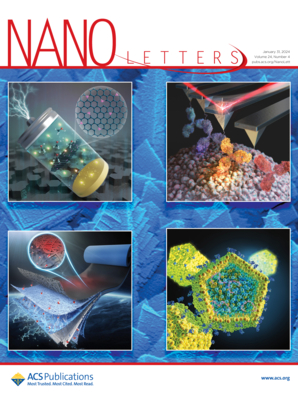Engineering Twins within Lattice-Matched Co/CoO Heterostructure Enables Efficient Hydrogen Evolution Reactions
IF 9.6
1区 材料科学
Q1 CHEMISTRY, MULTIDISCIPLINARY
引用次数: 0
Abstract
Twinning, as an effective strain engineering strategy, has demonstrated significant potential in modifying cost-effective transition metal electrocatalysts. However, controllable construction and structure–activity relationships of twinning in electrocatalysts remain formidable challenges. Here, we engineered a lattice-matched Co/CoO heterostructure with enriched twin boundaries through flash Joule heating, where the twins form via lattice matching within homogeneous space groups. XAFS analysis reveals significantly reduced Co coordination numbers in the heterostructure, indicating substantial atomic displacement from the equilibrium positions. The coherent twinning interfaces induce trapped strain, downshifting the d-band center by 0.4 eV and flattening bands near the Fermi level, optimizing the electronic structure for the hydrogen evolution reaction. Consequently, the engineered heterostructure exhibits exceptional performance with an ultralow overpotential of 49 mV at 10 mA cm–2 in alkaline media and remarkable stability over 500 h. Notably, the water splitting can be driven with an ultralow cell voltage of 2.05 V at 1 A cm–2.

晶格匹配Co/CoO异质结构内的工程双胞胎实现了高效的析氢反应
孪生作为一种有效的应变工程策略,在改性具有成本效益的过渡金属电催化剂方面显示出巨大的潜力。然而,电催化剂中孪生的可控结构和构效关系仍然是一个巨大的挑战。在这里,我们通过闪光焦耳加热设计了一个具有丰富孪晶边界的晶格匹配Co/CoO异质结构,其中孪晶是通过均匀空间群内的晶格匹配形成的。XAFS分析显示异质结构中的Co配位数显著降低,表明原子从平衡位置发生了大量位移。相干孪晶界面诱导捕获应变,使d带中心降移0.4 eV,并使费米能级附近的带变平,优化了析氢反应的电子结构。因此,该异质结构在碱性介质中表现出优异的性能,在10 mA cm-2下具有49 mV的超低过电位,并且在500 h内具有出色的稳定性。值得注意的是,在1 A cm-2下,2.05 V的超低电池电压可以驱动水的分裂。
本文章由计算机程序翻译,如有差异,请以英文原文为准。
求助全文
约1分钟内获得全文
求助全文
来源期刊

Nano Letters
工程技术-材料科学:综合
CiteScore
16.80
自引率
2.80%
发文量
1182
审稿时长
1.4 months
期刊介绍:
Nano Letters serves as a dynamic platform for promptly disseminating original results in fundamental, applied, and emerging research across all facets of nanoscience and nanotechnology. A pivotal criterion for inclusion within Nano Letters is the convergence of at least two different areas or disciplines, ensuring a rich interdisciplinary scope. The journal is dedicated to fostering exploration in diverse areas, including:
- Experimental and theoretical findings on physical, chemical, and biological phenomena at the nanoscale
- Synthesis, characterization, and processing of organic, inorganic, polymer, and hybrid nanomaterials through physical, chemical, and biological methodologies
- Modeling and simulation of synthetic, assembly, and interaction processes
- Realization of integrated nanostructures and nano-engineered devices exhibiting advanced performance
- Applications of nanoscale materials in living and environmental systems
Nano Letters is committed to advancing and showcasing groundbreaking research that intersects various domains, fostering innovation and collaboration in the ever-evolving field of nanoscience and nanotechnology.
 求助内容:
求助内容: 应助结果提醒方式:
应助结果提醒方式:


